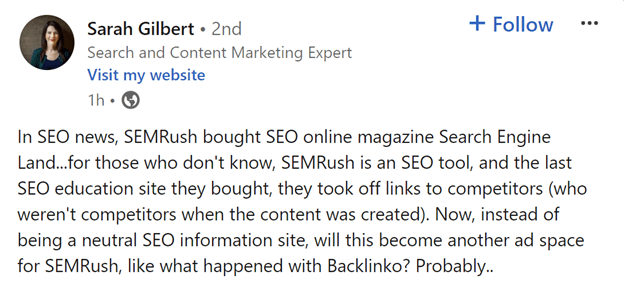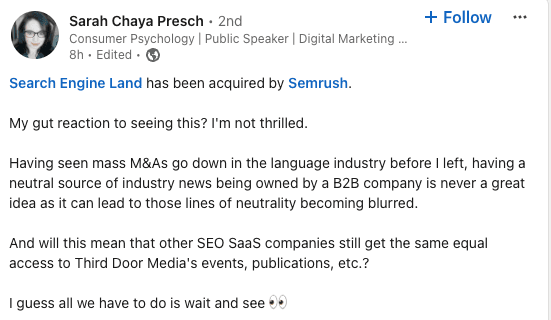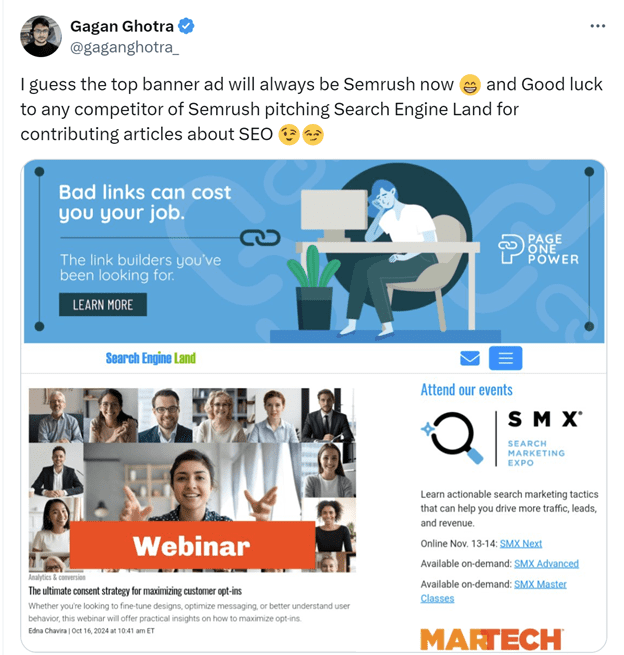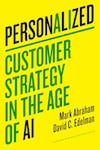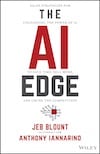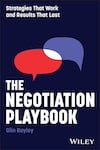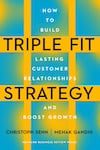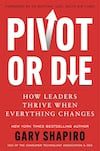This week’s Ask an SEO column comes from an anonymous asker:
“What should a backlink profile look like, and how do you build good backlinks?”
Great question!
Backlinks are a part of SEO as a way to build trust and authority for your domain, but they’re not as important as link builders claim.
You can rank a website without backlinks. The trick is focusing on your audience and having them create brand demand. This can be equal in weight to backlinks but drives more customers.
Once you are driving demand and have created solid resources, backlinks start occurring naturally. And when you have an active audience built from other channels, you can survey them to create “link worthy” pages that can result in journalists reaching out.
With that said, and when all else is equal, having the trust and authority from a healthy and natural backlink profile can be the deciding factor on who gets into the top positions and who gets no traffic.
A healthy backlink profile is one that appears to be natural.
Search engines, including Google, expect a certain amount of spammy links from directories, website monitoring tools, and even competitors that spam or try to do a negative SEO attack. These are part of a healthy backlink profile.
What is unnatural is when your website or company has done nothing to earn an actual link.
When there is nothing noteworthy, no original thought leadership or studies, or something that goes viral and the media covers, there’s no reason someone would ever have linked to you.
Having backlinks for no reason would likely be considered an unhealthy link profile, especially if they’re mostly dofollow.
Healthy link profiles contain a mix of dofollow, nofollow, sponsored, and mentions from actual users in forums, communities, and social media shares.
Unhealthy backlink profiles are where a website has links from topically irrelevant websites, when the articles have mentions of big brands and “trustworthy” or “high authority” sites, and then randomly feature a smaller company or service provider with them.
It’s an old trick that does not work anymore. Unhealthy link profiles also include private blogger networks (PBNs), link farms, link wheels, link networks, and where the sites have a high domain authority (DA), Authority Score (AS), etc.
Bonus tip: DA, AS, and other metrics are not used by search engines. They are scores that third-party SEO tools created and have absolutely no say when it comes to the quality of a website or backlink.
If someone is telling you high DA is good and Google trusts these sites, they’re selling you snake oil.
Although backlinks are not as important as they used to be, backlinks still matter. So, if you’re looking to build some, here are a few strategies to try, avoid, and tread lightly with.
Scholarship, Grants, And Sponsorships
These don’t work. Google knows you’re offering them to get .edu links, and in rare cases .gov links. And definitely from charities and events.
It’s easy to map back to who paid or bought them, and these likely won’t count for you SEO-wise.
If they make up the majority of your links, you should expect them to be neutralized by the search engines or to get a manual action against your site for unnatural link building in Search Console from Google.
If you’re doing a sponsorship, ask for the website being sponsored to place “sponsored” instead of “nofollow.”
And if you’re doing a scholarship or grant, feature the winner on your site, provide a full education and follow up about them, and have them share their story for the next few years in a monthly or quarterly column on your blog.
If you genuinely want to do good, share their story and progress. Otherwise, it was just for getting backlinks, and that works against you.
Citations And Broken Links
When you get mentions in the media, or a competitor has a naturally occurring link to a study, but it goes to a broken page, this is a good way to build a natural link. Reach out to these sites and ask them to link to your study instead.
You can mention their visitors are currently hitting a dead page if it’s a broken link, and present your study or resource, which is of equal or better value. Or share that yours has been updated where the current source is outdated and no longer applies.
For citations where nobody has a link, try letting the website owner know it saves the user a trip to a search engine to find another answer. And when they have a good experience on the website, they’re likely to come back for more information.
Topically Relevant PR
I’m a big believer in PR to acquire backlinks naturally. But you have to do things that make sense for your business.
- Local stores and service providers should get links from local news stations, local bloggers, and niche websites in their industry.
- Service providers need to focus on trade publications, industry-relevant blogs and publications, events, and social networks.
- Stores will do well with niche and audience-relevant bloggers, communities, publications or media websites, and mass media coverage that is not affiliate links or in an affiliate folder.
Think about what is newsworthy that you can do or provide that these groups would want to cover.
PR and SEO agencies that work with content will be able to provide ideas, then you can choose which ones you like and run with them. Not every campaign will work, but hang in there – the right one will happen.
You can also try surveying your audience for original data points and studies, and then publish them. And that goes to the next tip.
The publications must be topically relevant to you in order to help with SEO and avoid penalties.
If your customers and users are not the reader base of the website or publication, the link and coverage will appear unnatural and you’ll eventually get penalized or a devaluation.
Press Releases
Press release backlinks and syndication backlinks work against you, not for you. But that doesn’t mean they cannot help with link acquisition. For this strategy to work, provide enough data to gauge interest.
Share some of the data points from the study as a teaser and give a way for editors, journalists, and industry professionals to reach out to you.
Don’t charge for the study. But ask them to source and cite the data on your website, or reference your company as the source of the information.
But keep in mind that if your talking points are the same as your competitors, and you have the same type of data, there’s no reason to add another citation or to cover you.
What can you discover and share that hasn’t been covered and will enhance the publication’s articles in a new way? Put yourself in the reader’s shoes and think about what is missing or what questions were not answered.
If comments are enabled on the publications, look for questions and build a resource backed by data that answers them.
You can then reach out to the editors and make a strong case to either add you or create a new post about the new topic since the previous one did well.
Bonus tip: Even if you don’t get a backlink, being cited can go a long way, as you may be able to use the company’s logo in your PR bar as a trust builder. You can also reach out to the PR or brand team and ask for the link using the citation strategy mentioned above.
Blog And Forum Commenting
This does not work. Search engines know that anyone can go and spam these, use a bot, or pay someone to do this.
They will work against you, not for you. Just don’t. Let the communities and site owners link to you naturally.
If your customers are on the blog or in the community, join the community and participate. Use it to acquire an audience and build trust for your brand.
Not for backlinks. The backlinks and community mentions will eventually happen. And this is how they can become natural.
Social Media Profile Links
This does not work because anyone can create an account and get the link.
Links for SEO must be earned. Social media is about building an audience and bringing them to your website.
The backlinks are useless for SEO, with one exception. Some search engines crawl and index accounts.
If you struggle to get crawled, an active social media account that gets crawled and indexed fast may be able to encourage spiders to find your website and pages more easily.
Focus On Being Worth Linking To
There’s no shortage of ways to get backlinks, but not all links are good. If the link can be purchased or acquired by anyone, like a directory, it won’t help you with SEO.
If your customers are not on that website, and the majority of the website isn’t topically relevant to you, chances are the backlink will work against you.
Healthy link profiles have a mix of good and bad, natural and unnatural. If your company hasn’t done or shared anything link-worthy, there are no backlinks that can bring you long-term success.
Focus on being worth linking to, and the backlinks will come naturally.
More resources:
Featured Image: Paulo Bobita/Search Engine Journal






